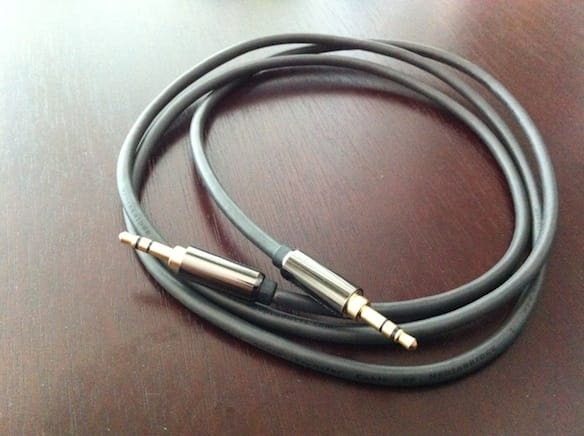
Image credit: Tim Tam.
Audio Cables
Cables are the tie that binds together a sound system. Despite great recent advancements in wireless technology, the best sound performance comes through wires. Priceonomics will quell some of the myths related to audio cables and steer the reader towards the optimum cable selection and configuration. There has long been a controversy in the sound industry regarding whether expensive cables result in higher quality sound performance than their inexpensive counterparts. The Anstendig Institute published a white paper on the subject, in 1996, concluding that they arrived at a solution with the application of Monster Cables Products, Inc.
In the process of attempting to quantify qualitative differences in sound performance, this paper asserts that the human limits of mnemonics and sensory perception preclude any sense other than sight from being able to make a one-to-one comparison. That aside, let’s take a look at some cables:
The concept of using a larger cable between sound components, with less resistance, is perhaps best explained with a plumbing metaphor. The amount of water that can get through a pipe is limited by the diameter of the pipe, where the smaller the diameter, the more resistance is encountered and less water can get through the pipe. A smaller gauge of wire creates a given amount of resistance, or line drag, which dilutes the signal passing through it in direct proportion to the length of the wire. If the signal is being diluted, the first loss is going to be detail, followed by volume and tonal accuracy.
Resistance
The smaller the diameter of the wire, the larger the gauge number used to describe it, and the greater the degree of electrical resistance on the electrons attempting to pass through it.
To begin with, the speakers are what we hear, so let’s specify Monster Cable Products, Inc. Original Cables, as speaker wires. According to a chart published on Wikipedia, a 22-gauge wire (smaller than the 18 gauge wire that seems to be standard included equipment with some sound gear manufacturers,) will power an 8-ohm load (speaker) over a maximum length of 12 feet before corrupting the signal with resistance. In contrast, by the same chart, a 10-gauge wire can convey the same load without corruption over 200 feet. Monster makes another cable, the XPHP, for shorter runs and smaller rooms.
Capacitance
Capacitance is the corruption of signal through the process of one cable bleeding current through the insulation and affecting the current load in the other cable. One mechanism of capacitance is brought about by wires that are too small to handle their loads, while the other is inadequate insulation.
This leads to an obvious conclusion: Whether or not the Monster Cables create a tangible difference in the perceived quality of sound, their use solves problems that may be caused by resistance or capacitance. Another obvious conclusion that can be drawn is that when it comes to investments in sound equipment, upgrading the cables is a relatively inexpensive way to ensure maximum performance from the individual components. Therefore, we recommend Monster Cables for RCA and coaxial connections between components as well as to drive speakers.
The controversies surrounding this polemic are historic and entertaining. There are manufacturers who have offered cash rewards to anyone who can beat their cables. The extremes of opinion include cameos by magicians and cables valued at $7200.
Then there are the detractors: Engadget has such a vociferous response to being quoted out of context, in favor of Monster Cables, that they have released the official quote: Monster Cables Suck.



